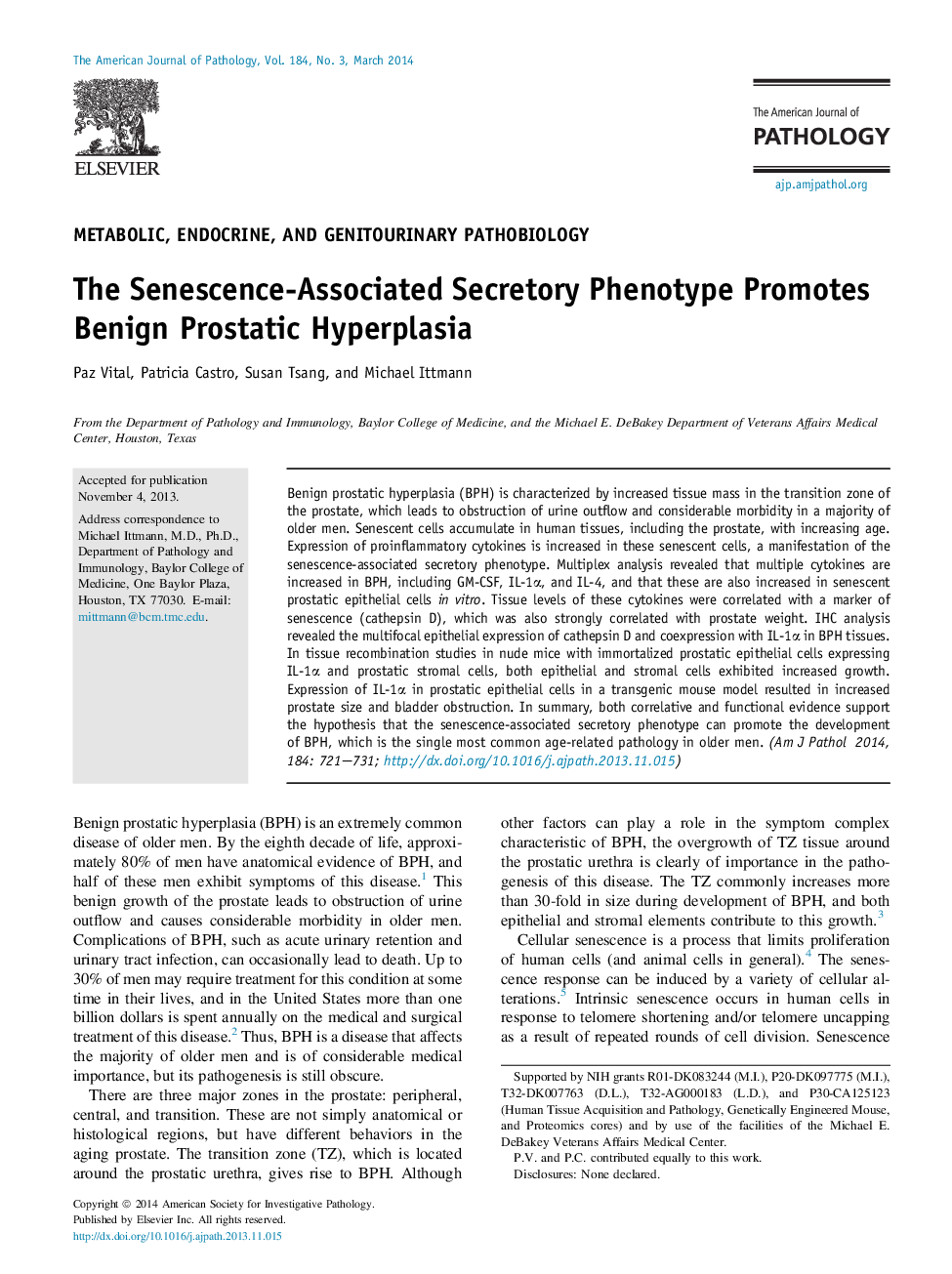| Article ID | Journal | Published Year | Pages | File Type |
|---|---|---|---|---|
| 5933105 | The American Journal of Pathology | 2014 | 11 Pages |
Benign prostatic hyperplasia (BPH) is characterized by increased tissue mass in the transition zone of the prostate, which leads to obstruction of urine outflow and considerable morbidity in a majority of older men. Senescent cells accumulate in human tissues, including the prostate, with increasing age. Expression of proinflammatory cytokines is increased in these senescent cells, a manifestation of the senescence-associated secretory phenotype. Multiplex analysis revealed that multiple cytokines are increased in BPH, including GM-CSF, IL-1α, and IL-4, and that these are also increased in senescent prostatic epithelial cells in vitro. Tissue levels of these cytokines were correlated with a marker of senescence (cathepsin D), which was also strongly correlated with prostate weight. IHC analysis revealed the multifocal epithelial expression of cathepsin D and coexpression with IL-1α in BPH tissues. In tissue recombination studies in nude mice with immortalized prostatic epithelial cells expressing IL-1α and prostatic stromal cells, both epithelial and stromal cells exhibited increased growth. Expression of IL-1α in prostatic epithelial cells in a transgenic mouse model resulted in increased prostate size and bladder obstruction. In summary, both correlative and functional evidence support the hypothesis that the senescence-associated secretory phenotype can promote the development of BPH, which is the single most common age-related pathology in older men.
